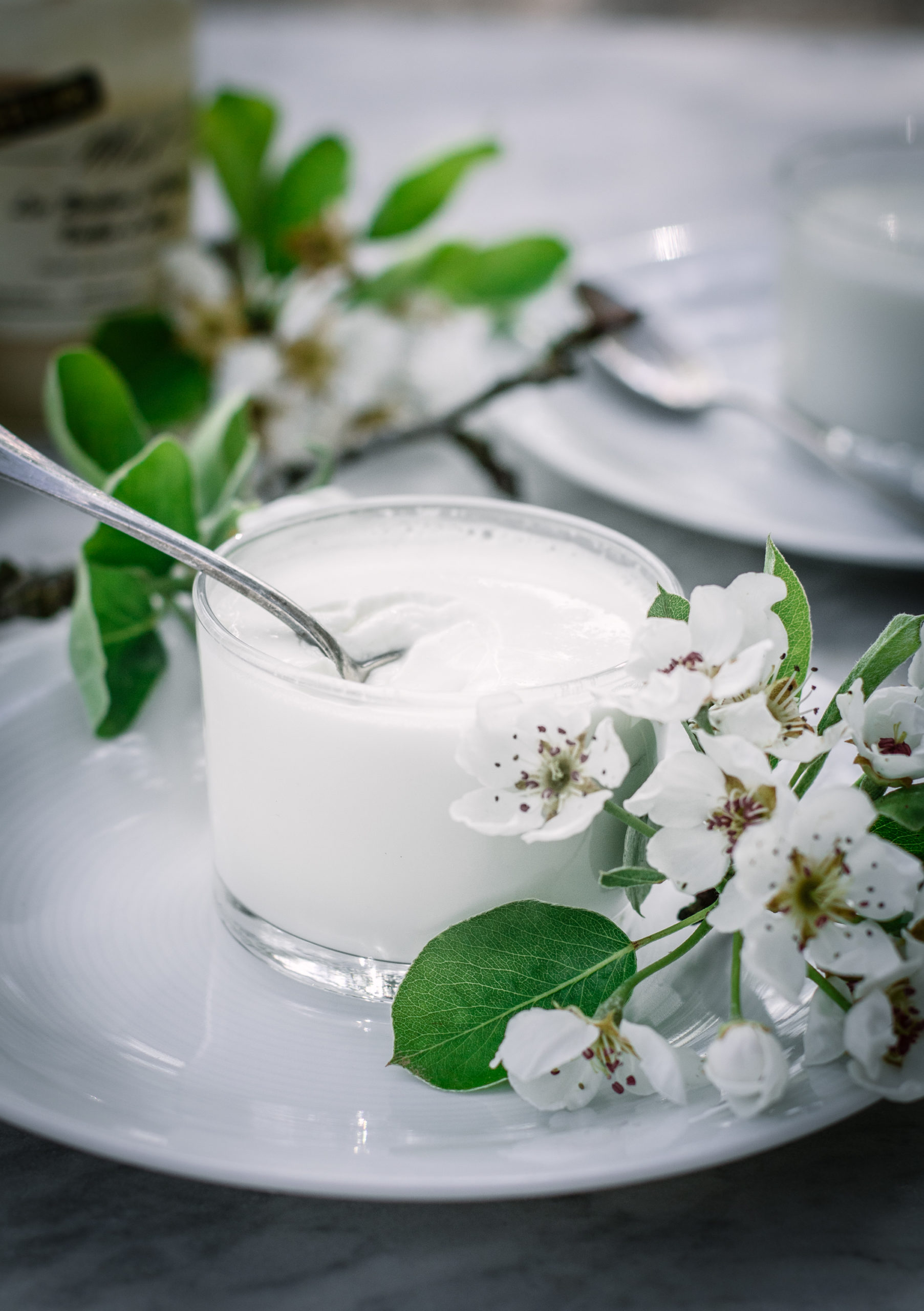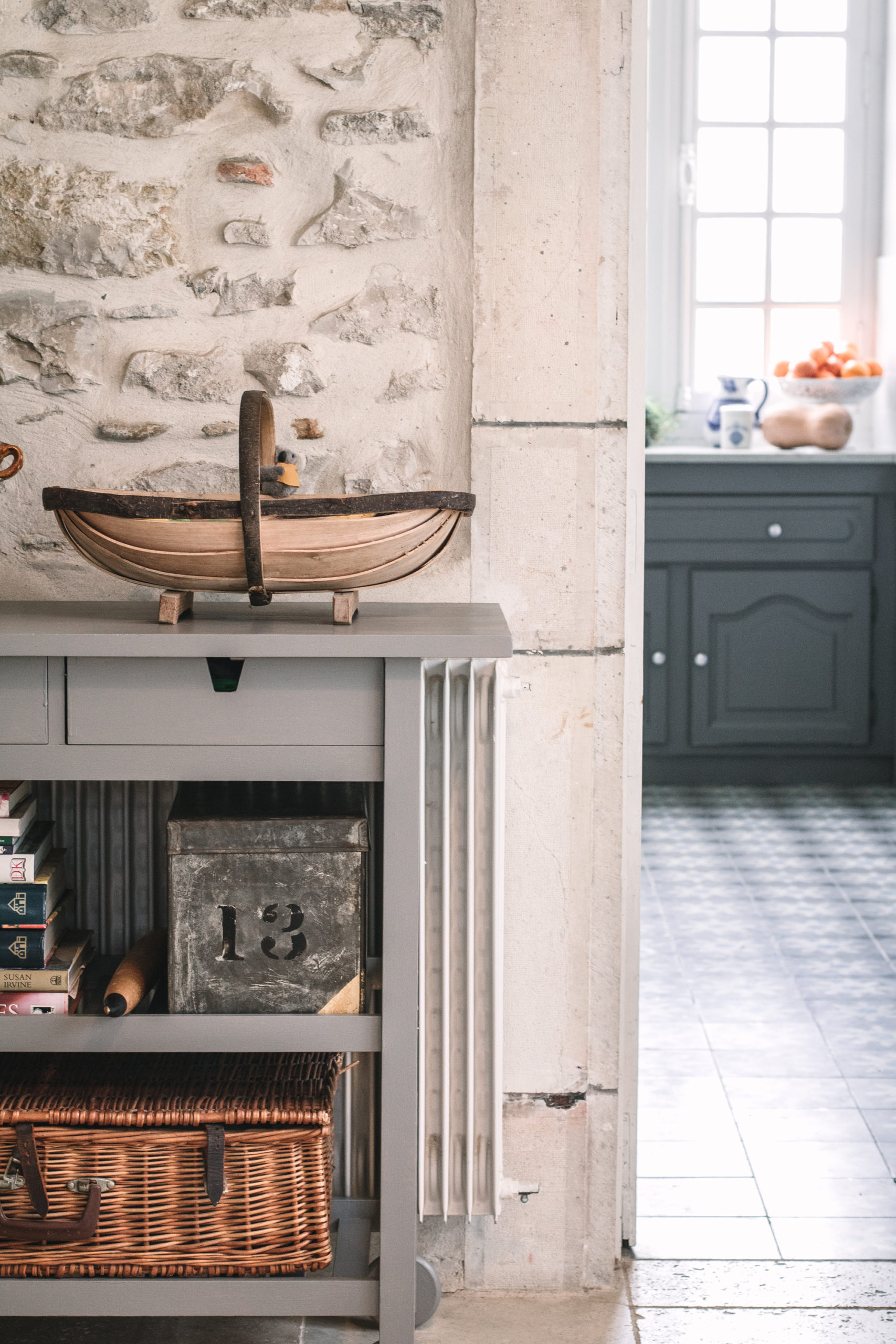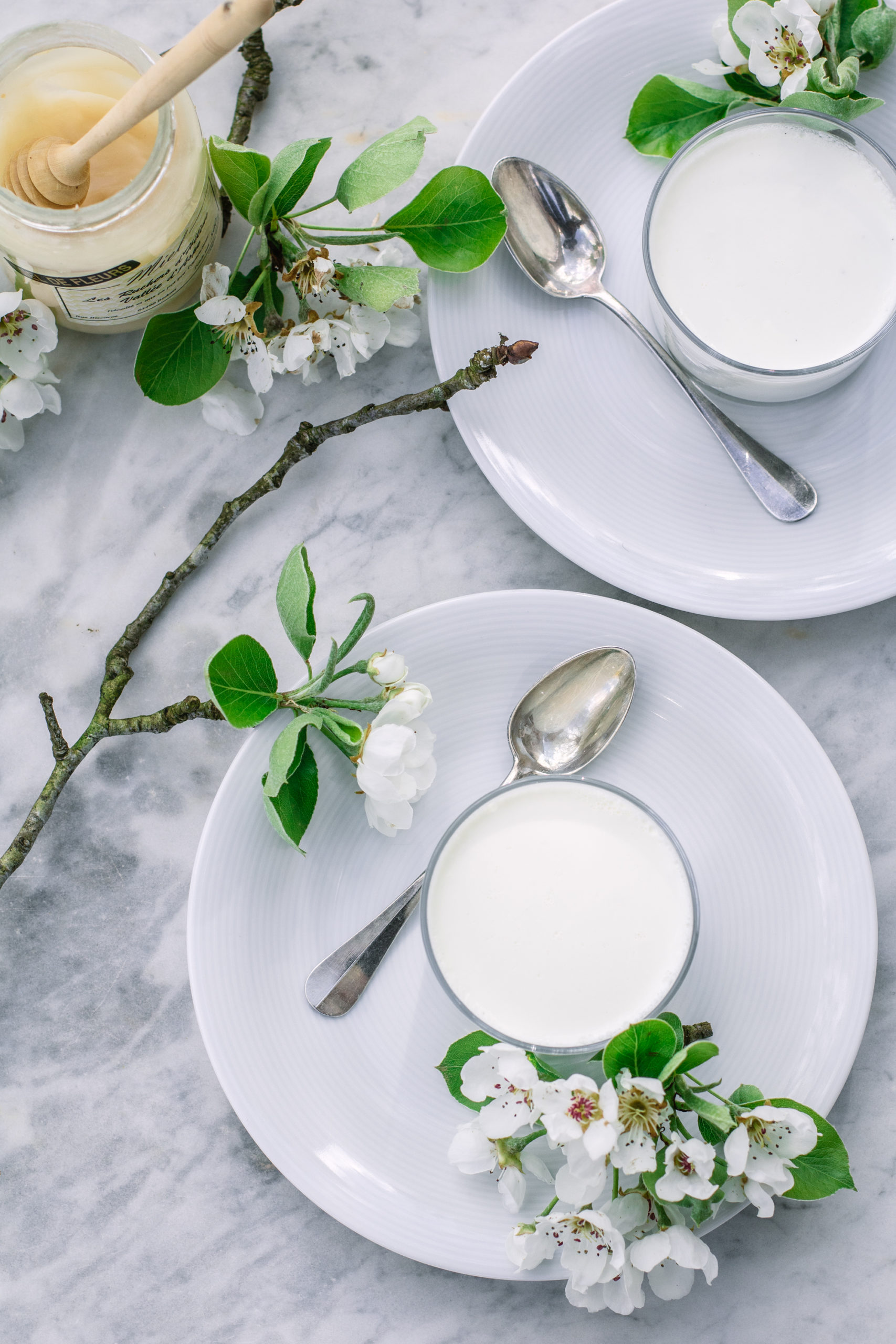
Caillé de brebis is a classic Bearnaise and Basque dessert. It’s made with the same sheep’s milk that’s used to make the famous AOP Brebis cheese, also produced within the Béarn and Pays Basque regions. I often buy Caillé from the farmer’s market, but the best I’ve ever tried is made by Jean-Luc from our local Auberge de la Fontaine; it’s creamy, yet delicately silken and laden with the sweet scent of vanilla. Jean-Luc’s Caillé de brebis is served in little ceramic pots, and the last few mouthfuls always contain a faint crunch of tiny black vanilla seeds, which for me, is the perfect ending for this deliciously simple indulgence.

The entry to the butler’s pantry at Chateau Montfort.
The key to the perfect Caillé de brebis is sheep’s milk. Jean-Luc and I are lucky enough to source ours from a local shepherd, who hand milks his flock each day in a village just a stone’s throw from Montfort and the Auberge de la Fountaine in Laás. If you don’t have access to sheep’s milk, try un-homogenised full-fat organic cow or goat’s milk.Like anything made from just a few ingredients, quality is everything.
Armed with Jean-Luc’s expert tips I made my first batch and it was superb. Here’s what he recommends:
- It’s important to bring raw milk to the boil to kill off any unwanted bacteria, but it’s equally important to wait till the milk temperature is exactly 36 degrees before pouring it into the serving glasses that contain the rennet. If it’s too hot the rennet will be destroyed by the heat of the milk and it won’t set.
- Serve with a little pot of local mountain honey for extra sweeness.
And here’s a few ways to break the rules, from me!
- Jean-Luc flavours his Caillé de brebis with a little sugar and vanilla seeds scraped straight from the pod (the traditional way of making caillé), however, you could also use cinnamon, nutmeg, star anise or cardamom pods to flavour the milk (or a combination). If using other spices, less is more; you don’t want to lose the flavour of the milk. Strain the milk through a sieve before pouring into the serving glasses if you’re using added spices to avoid unwanted debris in the milk.
- Honey or maple syrup could be substituted for the sugar if you prefer.
- A pot of homemade seasonal fruit compote served alongside Caillé de brebis is also a lovely accompaniment.

Caillé de brebis with sprigs of freshly picked pear blossom from our tree in the garden at Chateau Montfort.
Caillé de brebis is essentially the same thing as English Junket and perhaps that’s why I love it so much. My other would often make Junket for me as a child, although she made hers using a rennet tablet, which from memory, had a pinkish tinge to it. The smell of vanilla, combined with a wobbly silken spoonful of white creamy curds will forever remain one of the most nurturing tastes of my childhood. I hope you enjoy it too.
Sweet Caillé de Brebis with Vanilla (Individual Cups)
A creamy, sweetened version of traditional Caillé de Brebis, set individually in cups and infused with vanilla. Perfect for a simple, elegant dessert.
Ingredients
-
1 litre of fresh sheep’s milk (preferably raw if its permitted in your country, otherwise or pasteurised. You can use cows milk or goats milk if you prefer)
-
1/4 teaspoon liquid rennet (about 3-5 drops per cup)
-
1/4 cup granulated sugar (or to your taste)
-
1 teaspoon vanilla extract (or seeds from 1 vanilla pod)
-
Fresh herbs or fruit (for garnish, optional)
Method
-
Heat the milk: Pour the sheep’s milk into a saucepan and gently heat it over low heat, stirring occasionally. Bring the milk to just below boiling point, around 85°C (185°F). This helps prevent curdling. Once heated, remove the milk from the heat.
-
Dissolve the sugar and vanilla: Add the granulated sugar and vanilla extract (or vanilla seeds) to the warm milk. Stir until the sugar is completely dissolved and the mixture is smooth. Allow the milk to cool to blood temperature—around 37°C (98°F), which should feel warm but not hot to the touch.
-
Prepare the cups: While the milk is cooling, place individual serving glasses (such as small glass jars or ramekins) on a tray. Add 3-5 drops of liquid rennet to each cup (this depends on the size of your cups, but about 3-5 drops should suffice).
-
Pour the milk into cups: Once the milk has cooled to the correct temperature, gently pour it into each prepared cup over the rennet.
-
Let it set: Cover the cups with a clean cloth and place them in the refrigerator. Let them set for 12-24 hours until the milk is set. You’ll know it’s ready when the curd has thickened and has a smooth, creamy texture but is still quite wobbly and silken.
-
Optional garnish: Before serving, you can garnish with a drizzle of honey, fresh berries, or a few sprigs of fresh mint for added flavor and visual appeal.
Serving Suggestions
Serve in the individual cups for a charming and easy dessert. This sweet Caillé de Brebis is delicious on its own or paired with fresh fruit, honey, or a few slices of toasted brioche. Shepherds here in the Pyrenees pour a shot of coffee over caillé with a teaspoon of sugar for a quick breakfast before grazing their sheep.
This method results in a smooth, creamy curd with a subtle vanilla sweetness and is perfect for a refreshing, light dessert!

+ ADD A COMMENT